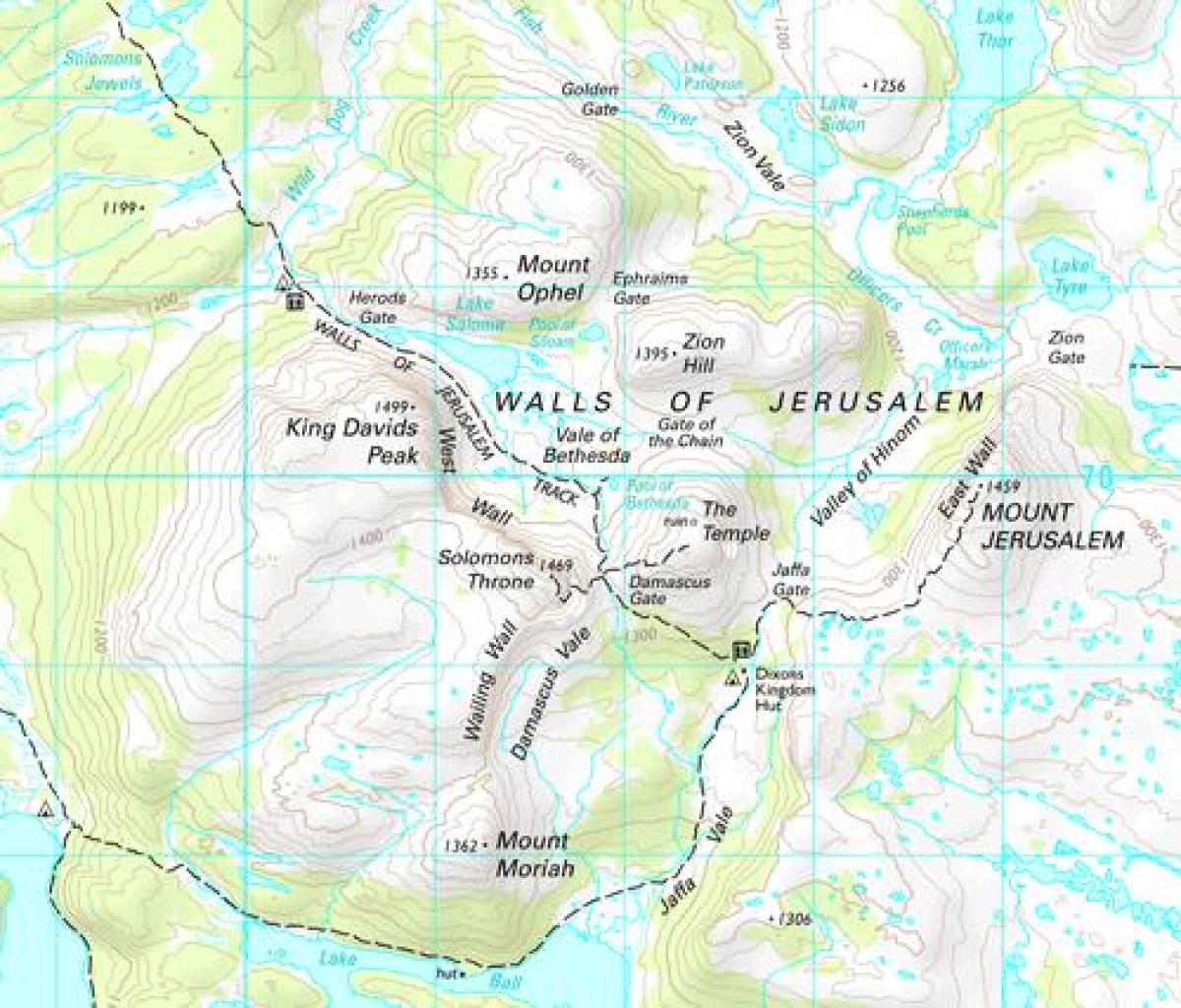search
Jerusalem topographic map
Topographical map of Jerusalem. Jerusalem topographic map (Israel) to print. Jerusalem topographic map (Israel) to download. Jerusalem is surrounded upon all sides by valleys, of which those on the north are least pronounced. The two principal valleys start northwest of the present city. The first runs eastward with a slight southerly bend (the present Wadi al-Joz), then, turns directly south (formerly known as "Kidron Valley," the modern Wadi Sitti Maryam), dividing the Mount of Olives from the city as its shown in Jerusalem topographic map. The second runs directly south on the western side of the city. It then turns eastward at its southeastern extremity, to run due east eventually joining the first valley near Bir Ayyub ("Job Well"). In early times it was called the "Valley of Hinnom," and in modern times is the Wadi al-Rababi (not to be confused with the first-mentioned valley).
A third valley starts in the northwest where the Damascus Gate is now located, and runs south-southeast to the Pool of Siloam. It divides at the lower part into two hills, the lower and the upper cities of Josephus. A fourth valley proceeds from the western hill (near the present Jaffa Gate) toward the Temple area, existing in modern Jerusalem as David Street. A fifth valley cuts the eastern hill into the northern and southern parts of the city. Later, Jerusalem came to be built on these four spurs. Today, neighboring towns are Bethlehem and Beit Jala at the southern city border, and Abu Dis to the east. Jerusalem is situated at 31° 46′ 45″ N 35° 13′ 25″ on the southern spur of a plateau, the eastern side of which slopes from 2,460 feet above sea-level north of the Temple area to 2,130 feet at its southeastern-most point as its mentioned in Jerusalem topographic map. The western hill is about 2,500 feet high and slopes southeast from the Judean plateau.


